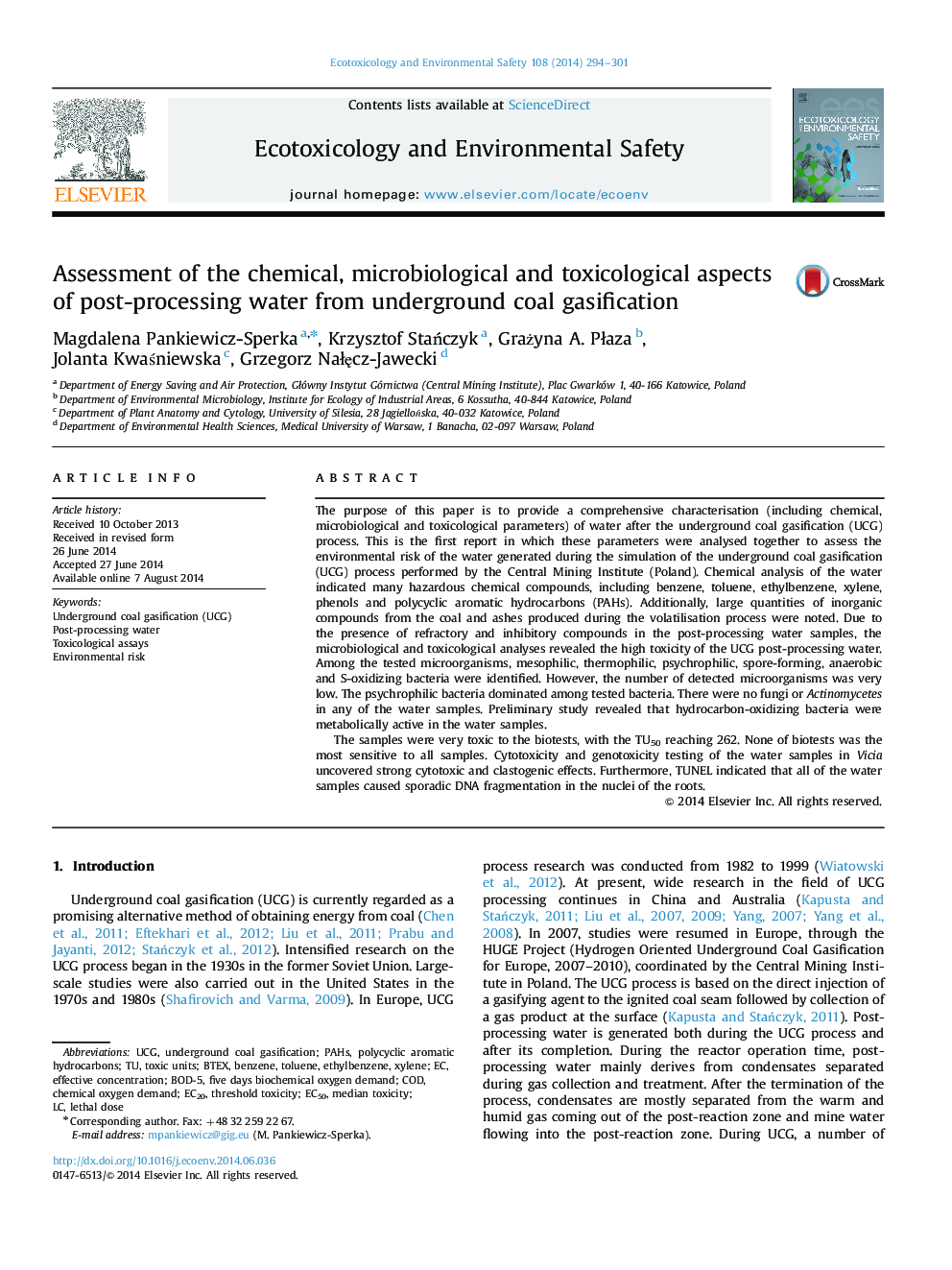| کد مقاله | کد نشریه | سال انتشار | مقاله انگلیسی | نسخه تمام متن |
|---|---|---|---|---|
| 4420095 | 1618955 | 2014 | 8 صفحه PDF | دانلود رایگان |
• Environmental risk associated with water pollution during UCG process.
• Chemical, microbiological and toxicological analyses were carried out.
• Bioaugmentation could be an effective method for the UCG post-processing water.
• First step in research on effective method for UCG post-processing water treatment.
The purpose of this paper is to provide a comprehensive characterisation (including chemical, microbiological and toxicological parameters) of water after the underground coal gasification (UCG) process. This is the first report in which these parameters were analysed together to assess the environmental risk of the water generated during the simulation of the underground coal gasification (UCG) process performed by the Central Mining Institute (Poland). Chemical analysis of the water indicated many hazardous chemical compounds, including benzene, toluene, ethylbenzene, xylene, phenols and polycyclic aromatic hydrocarbons (PAHs). Additionally, large quantities of inorganic compounds from the coal and ashes produced during the volatilisation process were noted. Due to the presence of refractory and inhibitory compounds in the post-processing water samples, the microbiological and toxicological analyses revealed the high toxicity of the UCG post-processing water. Among the tested microorganisms, mesophilic, thermophilic, psychrophilic, spore-forming, anaerobic and S-oxidizing bacteria were identified. However, the number of detected microorganisms was very low. The psychrophilic bacteria dominated among tested bacteria. There were no fungi or Actinomycetes in any of the water samples. Preliminary study revealed that hydrocarbon-oxidizing bacteria were metabolically active in the water samples.The samples were very toxic to the biotests, with the TU50 reaching 262. None of biotests was the most sensitive to all samples. Cytotoxicity and genotoxicity testing of the water samples in Vicia uncovered strong cytotoxic and clastogenic effects. Furthermore, TUNEL indicated that all of the water samples caused sporadic DNA fragmentation in the nuclei of the roots.
Journal: Ecotoxicology and Environmental Safety - Volume 108, October 2014, Pages 294–301
